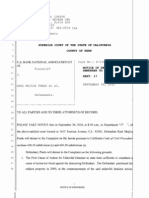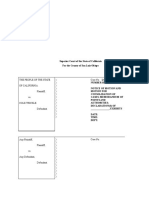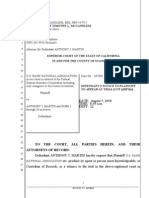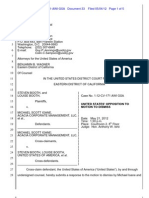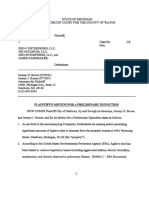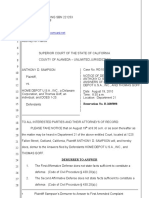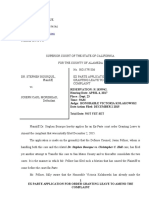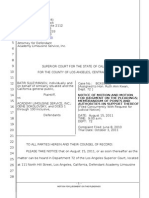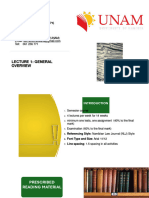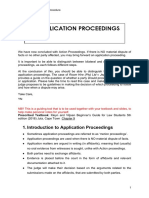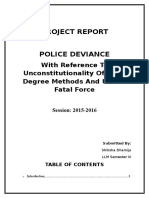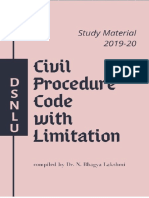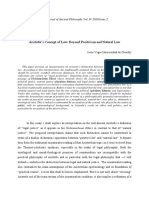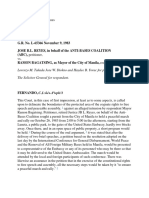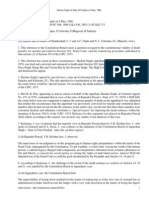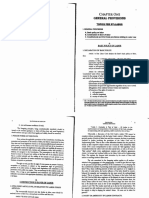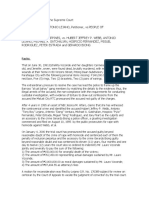The Introduction to Civil Procedure 2020
An overview of the Introduction to Civil Procedure
IMPORTANT NOTE!!!: Civil procedure is quite dense and complicated (you may
struggle to wrap your head around it in the beginning, that’s okay!). Civil procedure in
the MC and HC has some differences. Only the important stages will be discussed, for
the purpose of LT1.
The below serves as an OVERVIEW of Foundations of Law: An Introduction to Civil
Procedure.
1. What is the law of civil procedure?
2. What do you use the law of civil procedure for?
3. Types of Civil Proceedings: Action proceedings & Application proceedings
4. Possible Subsequent Proceedings: Execution, Appeal and Review
5. ACTION
6.1 Introduction
6.2 Pleadings (Pre-trial)
(a) Summons are issued
(b) Notice of intention to defend
(c) Plea
(d) Replication
(e) Litis Contestatio
(f) Judgment by default
6.3 Trial
(a) Plaintiff’s witnesses
(b) Defendants witness
(c) Argument
(d) Judgment
(e) Court Order/Interest/ Costs
(f) Execution
7. APPLICATION
7.1. Introduction
7.2. Ex parte application
(a) Rule Nisi (sometimes)
(b) Order
7.3. Notice Applications
(a) Applicant and respondent
(b) Founding affidavit
(c) answering affidavit
(d) Replying affidavit,
(e) The Trial (Argument, Judgment and Order)
(f) Execution
1
�The Introduction to Civil Procedure 2020
What is the law of civil procedure?
● Determines the procedure followed when an individual(s) is claiming relief
trough civil proceedings in a court of law
● A dispute of a private nature between parties who bring the matter in a civil
case triggers the use of the law of civil procedure. E.g. Person A violates person
B’s right(s)
● Private parties initiate & pursue matters [ in contrast to the State initiating the
proceedings in a criminal proceeding]
● Remember: In criminal proceedings, the complaint or victim is usually a witness
and not the initiator of proceedings
● There are TWO forms of civil proceedings: Action and Application proceedings
● The parties are referred to as Plaintiff v Defendant (in Civil Action)
OR
● Applicant v Respondent (in Civil Application)
● Remember: In criminal proceedings, the parties are S v Accused
● STANDARD OF PROOF: The elements that are surrounding the civil
proceedings must be proved on the BALANCE OF PROBABILITIES….while...
[in contrast to proving guilt BEYOND A REASONABLE DOUBT in criminal
proceedings].
2
�The Introduction to Civil Procedure 2020
What do you use the law of civil procedure for?
● Obtaining a declaratory order: Imagine there is a dispute that relates to the
question of law? A person may approach to obtain a declaratory order on
whether an unborn foetus enjoys the right to life? The individual seeks the court
to declare whether there is/or not a violation of a right (to life).
● To prevent damage or injury: This is to prevent TREATING violation of an
individual’s right or preventing assault
● To make injury good: The difference, in this case, is that a violation HAS
BEEN caused, hence need to make injury good. As opposed to a threatened
violation when seeking an interdict against an individual.
● To claim specific performance: Eg. Disputes that relate to the binding
contractual Agreements. An example could be a dispute with your landlord on
terms in the contract of lease or in a contract of sale with a local car dealership.
3
�The Introduction to Civil Procedure 2020
Types of Civil Proceedings: Action proceedings
& Application proceedings
This is in slide 4 of PPT Slides
ACTION PROCEEDINGS APPLICATION PROCEEDINGS
Commences by way of SUMMONS Commence by way of NOTICE OF
MOTION
The fundamental difference concerning facts No fundamental difference concerning
Eg Motor vehicle accident. Parties differ as to facts
the facts of what happened. Eg. Party seeks interdict. Parties do not
differ as to the facts of the case but want
the court to make a finding on a dispute of
law.
Proceedings=expensive and time-consuming Proceedings = quick and not time-
consuming (generally no oral evidence)
Plaintiff v Defendant Applicant v Respondent
● The table above is to illustrate the distinction between the two forms of civil
proceeding: Action and Application Proceedings
● An understanding of these forms of civil proceedings will help a legal
practitioner in advising their client on whether to lodge action or application?
● Because of the expensive and time-consuming nature of civil proceedings, in
general. It is important to ‘choose’ the correct ‘route’ for your client.
● Action and Application follow different routes, which is why it is important to not
make errors in your ‘choice of the path to use’.
● If there is a fundamental difference concerning the facts?= Action Proceeding
● If there is NO fundamental difference concerning facts?= Application
Proceedings
● Action Proceedings are usually more time-consuming than an Application
Proceedings because of oral evidence that is adduced by witnesses of either
parties or both.
4
�The Introduction to Civil Procedure 2020
Possible Subsequent Proceedings: Execution, Appeal
and Review
Execution
● When a party does not comply with the court ruling VOLUNTARY, the execution
of the order or ruling will be enforced
Appeal and Review
● The situation when a party is not satisfied with the court ruling
● Approach a higher court to review or appeal the decision of the court
● Appeal= followed when a party is of opinion that judgment of the court was
incorrect with respect to the finding on FACTS or APPLICATION OF LAW
● Review=Alleged irregularity with respect to PROCESS followed.






